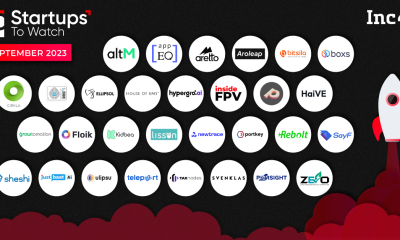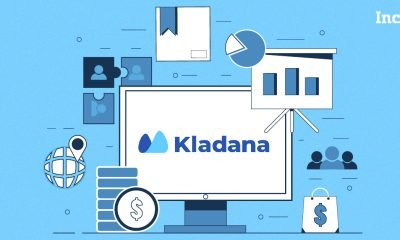Tech giants are increasingly eyeing nuclear reactors to power their energy-hungry data centers. Amazon and Microsoft each inked major deals this year with nuclear power plants in the US. And both Microsoft and Google have shown interest in next-generation small modular reactors that are still in development.
Science
American Airlines will pay to bury 10,000 tons of CO2 underground

American Airlines signed a deal to trap 10,000 tons of carbon dioxide underground. It’s part of the airline’s plans to limit the pollution causing climate change, and it marks the first major deal for the Bill Gates-backed startup Graphyte that’s developing cutting-edge technology to tackle the problem.
Similar startups are selling services to big brands that want to draw down some of the planet-heating emissions they release into the atmosphere. They’re developing technology that filters CO2 out of the air or seawater — equipment that’s so expensive that it hasn’t been able to scale enough to make a meaningful dent in carbon emissions.
It marks the first major deal for the Bill Gates-backed startup Graphyte that’s developing cutting-edge technology
Graphyte is unique because it relies on a seemingly simple process to permanently store carbon underground, making its strategy way more affordable than its competitors. With a giant like American Airlines as its first customer, Graphyte has a chance to prove whether its technology can overcome challenges other carbon credit schemes face.
Graphyte claims that it can capture carbon for the low, low price of $100 per ton. For comparison, the largest carbon dioxide removal plant operating today captures CO2 for companies including Microsoft, Stripe, and Shopify for around $600 a ton. Considering American Airlines produced the equivalent of 49 million metric tons of carbon dioxide in 2022, you can see how carbon removal costs can balloon.
Industry insiders often point to $100 a ton as the goal for making carbon removal technology affordable enough to scale. How has Graphyte hit that mark? It claims to use significantly less energy than its competitors. Running machines that suck CO2 out of the atmosphere or oceans tends to use a lot of electricity, an issue that drives up costs and can even limit how much good they do for the climate without access to ample clean energy sources.
Graphyte has a totally different tactic, which it calls carbon casting. Essentially, it’s a way to mummify plant matter — preventing it from decaying, which would otherwise release carbon dioxide that the plants absorbed when they were alive through photosynthesis. The company starts by collecting biomass, which, in this case, is waste from agriculture and timber production. Then it dries the plant material, preventing decomposition by getting rid of any moisture and microbes. After that, the biomass gets tightly packed into bricks and wrapped in what Graphyte says is “an environmentally-safe, impermeable barrier to ensure that decomposition does not restart.” Bury those bricks underground, and Graphyte says it can store the carbon dioxide those plants took in during their lifetime for a thousand years.
The first commercial deployment of this method for American Airlines will take place at Graphyte’s facility in Pine Bluff, Arkansas. The company also has financial backing from Gates’ climate investment firm, Breakthrough Energy Ventures.
The deal is for Graphyte to capture and store 10,000 tons of carbon for American Airlines by 2025, with carbon removal credits issued to represent each ton of carbon removed. Those credits resemble similar carbon offsets tied to forests or tree planting schemes, programs that have been criticized for failing to result in real-world reductions in greenhouse gas pollution. Emerging credit markets for methods to remove CO2, like carbon casting, will have to prove that they can get their accounting right. In other words, they’ll have to show that new projects actually permanently trap CO2 that otherwise would have wound up in the atmosphere.
Moreover, it doesn’t do any good for a company to rely entirely on capturing carbon dioxide to fight climate change. Even at $100 a ton, it gets inordinately expensive to try to capture or offset tens of millions of tons of CO2 pollution each year. And the science is clear that tactics like carbon removal are only a supplement to the real cure for climate change: preventing the pollution in the first place by dropping fossil fuels and turning to clean energy. For its part, American Airlines is also working on transitioning to sustainable aviation fuels and even reducing airplane contrails that exacerbate global warming.
Science
Jeff Bezos’ Blue Origin plans to launch a new crew capsule on Monday

Blue Origin is preparing to launch its NS-27 mission with the RSS Kármán Line, its new crew capsule, on Monday at 9AM ET. It will be the first launch for the capsule, which the company says in its announcement will have improved performance and reusability, along with “an updated livery, and accommodations for payloads on the booster.”
The flight will carry two LIDAR sensors into space that will be used for Blue Origin’s Lunar Permanence program to develop Moon landers. Those are among 12 payloads that also include ultra-wideband proximity operations sensors, a reproduction of the black monoliths from 2001: A Space Odyssey, and student postcards submitted to its Club for the Future nonprofit. Blue Origin will stream the launch on its website, starting 15 minutes before liftoff.
NS-27’s next flight comes as Blue Origin works toward the goal of becoming a real SpaceX competitor. Company CEO Dave Limp, the former Amazon hardware boss who took over late last year, said the company needs to “be able to build things a lot” to become “a world class manufacturer” in an interview with CNBC.
“We’d like to [be delivering] about an engine a week by the end of the year. I’m not sure we’ll get exactly to a week, but it’ll be sub-10 days … [and] by the end of 2025, we have to be faster than that,” Limp said.
Blue Origin plans to launch New Glenn, its big reusable booster that recently completed its first second-stage hot fire test, for the first time in November. Blue Origin says the rocket can deliver 45,000 kilograms (more than 99,000 pounds) into low Earth orbit, which CNBC notes is roughly double what SpaceX’s Falcon 9 can do. The company also hopes to land the booster on its first flight.
Science
Big Tech has cozied up to nuclear energy

New AI data centers need a lot of electricity, which has taken companies further away from their climate goals as their carbon emissions grow. Nuclear reactors could potentially solve both of those problems. As a result, Big Tech is breathing new life into America’s aging fleet of nuclear reactors while also throwing its weight behind emerging nuclear technologies that have yet to prove themselves.
“Certainly, the prospects for this industry are brighter today than they were five and 10 years ago,” says Mark Morey, senior adviser for electricity analysis at the US Department of Energy’s Energy Information Administration.
“Certainly, the prospects for this industry are brighter today”
Much of America’s aging nuclear fleet came online in the 1970s and 1980s. But the industry has faced pushback following high-profile accidents like Three Mile Island and the Fukushima disaster in Japan. Nuclear power plants are also expensive to build and generally less flexible than gas plants that now make up the biggest chunk of the US electricity mix. Gas-fired power plants can more quickly ramp up and down with the ebb and flow of electricity demand.
Nuclear power plants typically provide steady “baseload” power. And that makes it an attractive power source for data centers. Unlike manufacturing or other industries that operate during daytime business hours, data centers run around the clock.
“When people are sleeping and offices are shut and we’re not using as much [electricity], what matches nuclear energy very nicely with data centers is that they pretty much need power 24/7,” Morey says.
That consistency also sets nuclear apart from wind and solar power that wane with the weather or time of day. Over the past five years or so, many tech companies have accelerated climate goals, pledging to reach net zero carbon dioxide emissions.
The added energy demand from new AI tools, however, has put those goals further out of reach in some cases. Microsoft, Google, and Amazon have all seen their greenhouse gas emissions climb in recent years. Getting electricity from nuclear reactors is one way companies can try to bring those carbon emissions down.
A feat that’s never been done before in the US
Microsoft signed an agreement to purchase power from shuttered Three Mile Island in September. “This agreement is a major milestone in Microsoft’s efforts to help decarbonize the grid in support of our commitment to become carbon negative,” Microsoft VP of energy Bobby Hollis said in a press release at the time.
The plan is to revive the plant by 2028, a feat that’s never been done before in the US. The plant “was prematurely shuttered due to poor economics” in 2019, according to Joe Dominguez, president and CEO of the company, Constellation, that owns the plant. But the outlook for nuclear energy now is rosier than it has been for years as companies look for carbon pollution-free sources of electricity.
In March, Amazon Web Services purchased a data center campus powered by the adjacent Susquehanna Nuclear power plant in Pennsylvania. That $650 million deal secures electricity from the sixth largest nuclear facility in the US (out of 54 sites today).
Google is considering procuring nuclear energy for its data centers as part of its sustainability plans. “Obviously, the trajectory of AI investments has added to the scale of the task needed,” CEO Sundar Pichai said in an interview with Nikkei this week. “We are now looking at additional investments, be it solar, and evaluating technologies like small modular nuclear reactors, etc.”
He’s referring to next-generation reactors that are still in development and not expected to be ready to connect to the power grid until the 2030s at the earliest. The US Nuclear Regulatory Commission certified a design for an advanced small modular reactor for the first time last year. These advanced reactors are roughly one-tenth to one-quarter the size of their older predecessors; their size and modular design are supposed to make them easier and cheaper to build. They might also be more flexible than larger nuclear plants when it comes to adjusting how much electricity they produce to match changes in demand.
Bill Gates, for one, is all in on nuclear energy. He’s the founder and chair of TerraPower, a company developing small modular reactors. Last year, Microsoft put out a job listing for a principal program manager to lead the company’s nuclear energy strategy that would include small modular reactors.
Bill Gates, for one, is all in on nuclear energy
“I’m a big believer that nuclear energy can help us solve the climate problem, which is very, very important,” Gates said in an interview with The Verge last month.
This week, the Department of Energy released a new report projecting that US nuclear capacity could triple by 2050. After flatlining for years, electricity demand is expected to rise in the US thanks to EVs, new data centers, crypto mining, and manufacturing facilities. That growing demand is changing the outlook for nuclear energy, according to the report. Just a couple years ago, utilities were shutting down nuclear reactors. Now, they’re extending reactors’ lifetimes by up to 80 years and planning to restart ones that have shuttered, it says.
“It is reasonable to think that the tech companies could catalyze a new wave of investment in nuclear, in the US and around the world. There has been plenty of talk about the idea in the industry,” Ed Crooks, Wood Mackenzie senior vice president, thought leadership executive for the Americas wrote in a blog post this week.
This doesn’t necessarily mean that it’s all smooth sailing ahead for nuclear energy in the US. New reactor designs and plans to reopen shuttered nuclear power plants are still subject to regulatory approval. Initiatives to build both old-school power plants and new designs have faced soaring costs and delays. Amazon already faces opposition to its nuclear energy plans in Pennsylvania over concerns that it could wind up driving up electricity costs for other consumers. And the nuclear energy industry still faces pushback over the impact of uranium mining on nearby communities and concerns about where to store radioactive waste.
“It’s an interesting time, challenging in many ways,” Morey says. “We’ll see what happens.”
Science
Watch what it’s like to handle an overturned truck full of burning batteries

A truck full of lithium-ion batteries was knocked over near the Port of Los Angeles on September 26th, exploded, and was left to burn for days — interrupting traffic on highways, and a bridge and shutting down port terminals. A local towing company, Pepe’s Towing Service, caught the explosion on camera and vlogged the incident for days until it was time for them to haul the remnants away.
Pepe’s Tow Service owner Josh Acosta uploaded a lengthy video today chronicling the point of explosion, the long wait as the Fire Department let the batteries burn, and the process of lifting the container full of burnt batteries to transport. In the video, we see what looks like stacks of batteries with liquid cooling pipes between each layer.
Image: Pepe’s Towing Service
Image: Pepe’s Towing Service
Image: Pepe’s Towing Service
In a phone call with The Verge, Acosta says the battery is one “giant container-sized battery” that “does not come apart.” He believes it could be used in buildings for backup power. According to Acosta, the battery weighed 60,000 pounds.
Acosta says he doesn’t remember which company owns the container that transported the battery — but his video blurs out text on the side of the container anyhow.
The video shows the painstaking logistics for firefighters dealing with burning lithium-ion cells — they often need to use thousands of gallons of water to put these out, including on electric vehicle fires. And in this case, the Los Angeles Fire Department told The Verge that the fire kept going on and off.
Acosta told us he was called to the job by the customer who owns the overturned truck, and that’s why he caught the moment on camera. Now, Pepe’s Towing is hauling the remnants of the container for scrap recycling.
-

 Startup Stories12 months ago
Startup Stories12 months agoWhy Millennials, GenZs Are Riding The Investment Tech Wave In India
-

 Startup Stories12 months ago
Startup Stories12 months agoStartups That Caught Our Eyes In September 2023
-

 Startup Stories1 year ago
Startup Stories1 year agoHow Raaho Is Using Tech To Transform India’s Fragmented Commercial Trucking
-

 Startup Stories11 months ago
Startup Stories11 months agoMeet The 10 Indian Startup Gems In The Indian Jewellery Industry’s Crown
-

 Crptocurrency7 months ago
Crptocurrency7 months agoLither is Making Crypto Safe, Fun, and Profitable for Everyone!
-

 Startup Stories12 months ago
Startup Stories12 months agoHow Volt Money Is Unlocking The Value Of Mutual Funds With Secured Lending
-

 E-commerce12 months ago
E-commerce12 months agoTop Online Couponing Trends To Watch Out For In 2016
-

 Startup Stories12 months ago
Startup Stories12 months agoWhy Moscow-Based Kladana Considers Indian SME Sector As The Next Big Market For Cloud Computing




